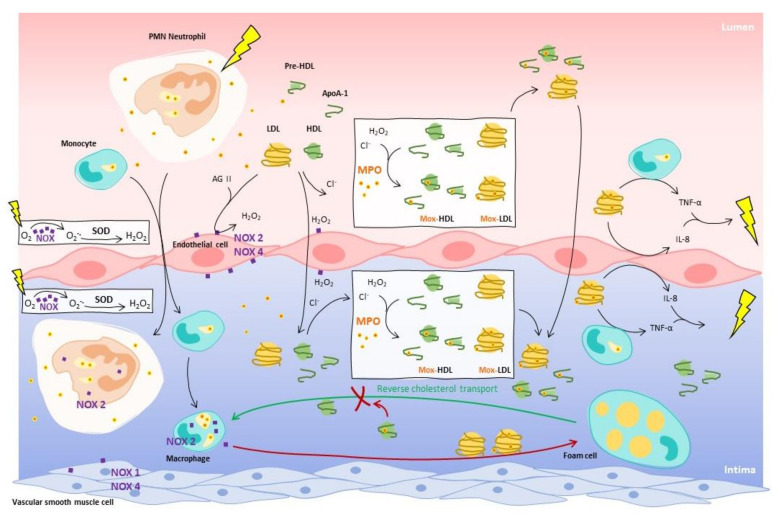Figure 1.
Activation of endothelium by LDLs promotes migration of monocytes and lymphocytes (neutrophils) into the underlying intima, and monocytes are then differentiated in macrophages. MPO can be found in neutrophils and macrophages. With the presence of Nox on endothelial cells, neutrophils and macrophages, H2O2 is produced by consuming the burst of oxygen from the inflammation. MPO interacts with LDLs and HDLs in both lumen and intima to oxidize apolipoproteins using chloride ions and H2O2 and produces Mox-LDLs and Mox-HDLs. While HDLs promote reverse cholesterol transport (RCT), Mox-HDLs are unable to perform the RCT and promote formation of foam cells, such as Mox-LDLs. Furthermore, Mox-LDLs induce pro-inflammatory activity from endothelial cells by stimulating the production of IL-8, and from monocytes by generation of TNF-α. MPO modifications contribute to maintain the inflammation in the vascular wall and in the vascular lumen.

